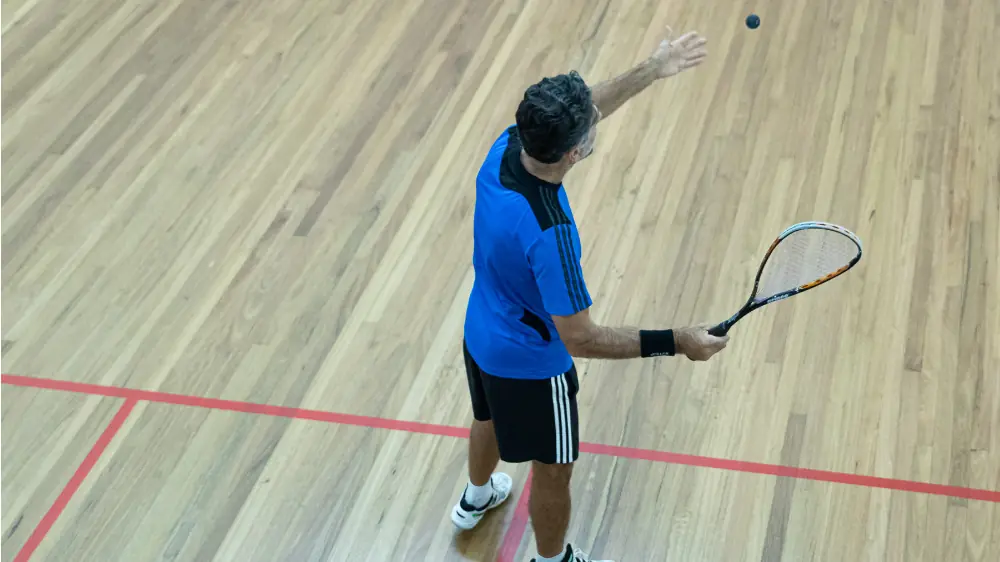06 December 2022 / 3-Min Read / Translate
I just want to start with this sound bite: "The better you get at squash, the less points you win on serve". But this article is about helping beginners, not advanced players, so what can beginners do to help themselves win points on their serve?

An example of a serving position where the server can't see their opponent. Original photo reproduced with permission from Seize The Light © Craig Stewart
As a beginner, your ability to adjust and compensate is limited. Making changes in fractions of a second is difficult (don't worry though, that aspect will improve over time). if you always hit the serve to the same place, even if it is a good serve, you are not taking advantage of that inability. Aim high, aim low, aim at the side wall, aim at the body, aim down the middle, hit hard, hit soft, hit medium; just make sure you are not hitting more than 3 consecutive serves in the same place.
Making contact with the ball near the side wall is difficult. The wall itself causes problems with swing as well as the ball's bounce speed and angle. Use the doubt and hesitancy this causes to your advantage by aiming to hit the wall where it causes the returner the most problems. That position depends on where they stand to receive serve and while a general location is high on the side wall just behind the service box, that may not be the best place every time.
This will bring long-term benefits, but may cause you issues in the short-term. By serving backhand on the right side (if you are right-handed) allows you a natural movement to the T area and makes it easy to keep watching what your opponent does. It's essentially a mirror image of what you do on the left side. Start by standing inside the box and move forward as you hit the ball. Ensure one foot is inside the box (not touching the line) and before your opponent has a chance to hit the ball, you can be on the T.
Practice this alone because otherwise you might hit very weak serves. If you can't hit a good backhand serve, your backhand needs improving anyway.
At beginner level 99% of players have a weaker backhand than forehand. Take advantage of that fact. If you play a left-handed player, make sure that you serve to their backhand as much as possible. Remember, when you have won the point after your opponent served, you are allowed to choose which side to start serving from. Choose the left side against left-handers. Thereafter you must alternative sides.
Of course, if your opponent has a great backhand serve then decide which side you think brings the most benefit. I have seen so many players not even realise that their opponent is left-handed and blindly serve to their forehand. Don't fall into that trap.
text 3
I will admit that at beginner level this type of serve can be quite effective, but I feel that developing the swing technique that will be effective at higher levels is more important that winning a few points now. Making contact with the ball above your head means that the angle and speed needed to get the ball into the corner means an easier return for your opponent.
As you improve at squash, your tactics change. What was once effective becomes less so. Use what works now, but with a thought for the future. Develop the mindset habit of adapting your squash to the current situation and that will help as you get better.